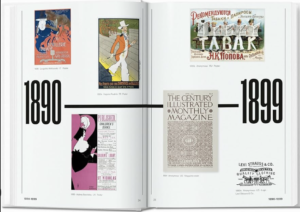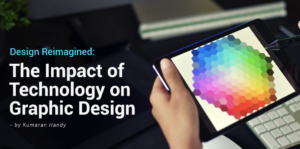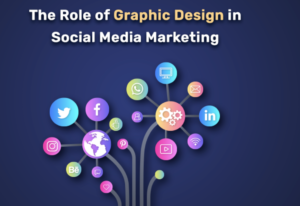Graphic design has been an integral part of our visual landscape for decades, shaping the way we perceive and interact with the world around us. From the iconic logos that adorn our favorite brands to the captivating posters that draw us into new experiences, the power of graphic design is undeniable. As an experienced human writer, I’m excited to delve into the evolution of this dynamic industry and explore how it is transforming to meet the ever-changing demands of the modern world.
Contents
- 1 The History of Graphic Design
- 2 The Impact of Technology on Graphic Design
- 3 Current Trends in Graphic Design
- 4 The Role of Social Media in the Evolution of Graphic Design
- 5 The Rise of User-Centered Design
- 6 The Importance of Responsive Design
- 7 The Integration of Motion Design in Graphic Design
- 8 The Future of Graphic Design
- 9 Conclusion
The History of Graphic Design
Graphic design has a rich and storied history, tracing its roots back to the early days of human civilization. From the intricate cave paintings of our ancestors to the ornate illuminated manuscripts of the Middle Ages, the desire to communicate visually has been a fundamental human impulse. As technology advanced, so too did the tools and techniques of graphic design, evolving from the hand-carved woodblocks of the printing press to the digital software we use today.

The History of Graphic Design
The Impact of Technology on Graphic Design
The advent of digital technology has had a profound impact on the field of graphic design. The shift from analog to digital tools has revolutionized the way designers work, allowing for greater flexibility, experimentation, and efficiency. The rise of powerful software like Adobe Creative Cloud has empowered designers to create stunning visuals with unprecedented precision and control. Furthermore, the ubiquity of digital devices has transformed the way we consume and interact with graphic design, opening up new avenues for interactive and immersive experiences.

The Impact of Technology on Graphic Design
Current Trends in Graphic Design
As the industry continues to evolve, we are witnessing the emergence of exciting new trends in graphic design. Some of the most notable developments include:
- Minimalism and Flat Design: The minimalist aesthetic, characterized by clean lines, bold colors, and a focus on simplicity, has become increasingly popular, reflecting a desire for a more streamlined and user-friendly visual experience.
- Augmented Reality and Virtual Reality: The integration of AR and VR technologies into graphic design has opened up new realms of possibility, allowing designers to create immersive and interactive experiences that blur the lines between the digital and physical worlds.
- Sustainability and Eco-Friendly Design: Driven by a growing awareness of environmental concerns, designers are increasingly incorporating sustainable materials and practices into their work, creating designs that are not only visually appealing but also environmentally responsible.
- Personalization and Customization: The rise of personalized and customized products has led to a demand for graphic design that can be tailored to individual preferences, creating a more intimate and engaging user experience.
The Role of Social Media in the Evolution of Graphic Design
The explosion of social media platforms has had a profound impact on the way graphic design is created, shared, and consumed. Platforms like Instagram, Pinterest, and TikTok have become powerful channels for designers to showcase their work, connect with their audience, and stay inspired by the latest trends. Furthermore, the emphasis on visual content on these platforms has driven a greater demand for eye-catching, visually engaging designs that can capture the attention of scrolling users.

The Role of Social Media in the Evolution of Graphic Design
The Rise of User-Centered Design
In recent years, there has been a growing emphasis on user-centered design, where the needs and preferences of the end-user are the primary focus of the design process. This shift has led to a greater emphasis on research, empathy, and iterative design, ensuring that the final product not only looks visually appealing but also meets the needs and expectations of the target audience.
The Importance of Responsive Design
As the use of mobile devices continues to dominate the way we access and consume digital content, the importance of responsive design has become increasingly critical. Designers must now consider how their creations will adapt and function across a wide range of screen sizes and devices, ensuring a seamless and consistent user experience regardless of the platform.
The Integration of Motion Design in Graphic Design
The integration of motion design into graphic design has added a new dimension to the field, allowing designers to bring static visuals to life and create a more dynamic and engaging user experience. From subtle animations to full-fledged motion graphics, this trend has transformed the way we interact with and perceive graphic design.
The Future of Graphic Design
As we look towards the future, it’s clear that the field of graphic design will continue to evolve and adapt to the changing technological and cultural landscape. Emerging technologies like artificial intelligence, generative design, and blockchain-based digital assets are poised to disrupt the industry, offering new tools and possibilities for designers to explore. Additionally, the increasing importance of sustainability and social responsibility will likely shape the priorities and practices of the graphic design community, leading to a greater emphasis on ethical and environmentally conscious design solutions.
Conclusion
The evolution of graphic design is a captivating and multifaceted story, one that reflects the dynamic nature of our visual world. From the rich history of the industry to the transformative impact of technology, the field of graphic design continues to push the boundaries of what is possible, constantly reinventing itself to meet the needs of a rapidly changing world. As an experienced human writer, I am excited to see what the future holds for this ever-evolving industry, and I encourage you to stay curious and engaged as we navigate this exciting journey together.
If you’re interested in exploring the latest trends and innovations in graphic design, be sure to subscribe to our newsletter. We’ll keep you up-to-date on the latest developments, share inspiring case studies, and provide insights from industry experts. Sign up now to stay ahead of the curve!
